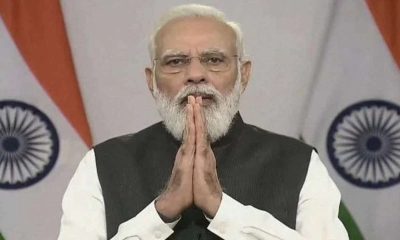India News
Why is it sweating in Shillong?

[vc_row][vc_column][vc_column_text]Because temperatures in India’s biodiversity hotspot are on the rise
By Dinesh C Sharma
Sitting in the glass-and-concrete State Convention Centre in the capital of hilly state, Meghalaya, participants of a media workshop on climate change were feeling sweaty. The convention centre is not air-conditioned nor does it have ceiling fans. For the comfort of guests, some pedestal fans were plugged in.
Why are we sweating in Shillong? Asked state information technology minister Dr M Ampareen Lyngdoh. The question may sound strange for those who have read in tourist brochures and text books about the wettest places on the planet being in Meghalaya and about its round-the-year cool weather.
The answer to this question came in the form of a new study done by researchers from the Water and Climate Lab at Indian Institute of Technology (IIT), Gandhinagar. The study has shown that air temperature in the state is rising at the rate of 0.031 degree per year. The trend is consistent from 1981 to 2014, barring the years 1991 and 1992. This translates into 1 degree centigrade rise between 1981 and 2014, which is quite significant. Future projections indicate similar rise over next two decades.
The state has also been witnessing highly fluctuating frequencies of hot days, hot nights, cold days and cold nights. “The number of hot days and nights show an increasing trend while that of cold days and cold nights show a declining trend. These are indications of a consistently warming region,” pointed out lead author Dr Vimal Mishra while presenting results of the study commissioned by the state government. “The higher number of hot night frequencies is a matter of concern for the state.”
Based on historic and observed data as well as computer models, the study has projected changes over short-term (2013-2040), mid-term (2041-2070) and long-term (2071-2100) for the state. It is a high-resolution study in the sense that projections have been made for grids of 5 X5 km size, so as to help in vulnerability assessment for each grid and adaptation planning at local level.
Future projections show an increasing temperature rise under different scenarios. Under these projections, the rise in maximum temperature in Meghalaya in the long term ranges from 2.65 degree to 3.8 degree, while the rise in minimum temperature will be between 2 degree and 3.5 degree in the long term. The increase in temperature may result in higher number of extreme hot days and nights. Under the extreme scenario projection, the number of hot days could be as high as 100 a year. Similarly, there may be a decrease in extreme cold days and nights.
“The state has already seen a rise of temperature of 1 to 1.5 degree in the past three decades, and the projections point to a similar rise by 2040. If temperature in Meghalaya will rise by about 3 degree rise in a span of half a century, we don’t know what Meghalaya will be like in future – West Bengal or Assam?,” wondered Dr Mishra.
There will be changes in the rainfall patterns too in future. The central plateau region is projected to experience an increase in rainfall at a higher rate than the rest of the state. The occurrence of extreme rainfall events will also show an upward trend under various projected scenarios. “The West Khasi hills which already receive very high precipitation are projected to face even higher rise in precipitation,” Dr Mishra added.
The changing climate in Meghalaya, he said, would have widespread implications for forests, water resources, biodiversity, agriculture, livestock and human health. For instance, due to significant rise in temperature, forest fires may go up while extreme rainfall events will increase risk of landslides in high altitude areas causing siltation of water bodies downstream. The rise in temperature will also threaten endemic plant species many of which are already on the verge of extinction. Rainfed agriculture in the state will be adversely hit with crop yields and production declining. Higher temperature will also induce premature breaking of insects and pests.
“Meghalaya has some of the most vulnerable districts to current climate risks and long term climate change in the region,” pointed out Prof. N.H. Ravindranath of Indian Institute of Science, Bangalore. “Sectors like agriculture, forests, fisheries, horticulture are already subjected high climate risks currently and will be highly vulnerable to climate change risks in future. We need to prepare both incremental as well as transformational adaptation plans to make based on vulnerability assessments.”
The workshop was jointly organized by the Department of Science and Technology, Indian Himalayas Climate Adaptation Programme (IHCAP) and Centre for Media Studies. (India Science Wire)[/vc_column_text][/vc_column][/vc_row]
Education
Farmer’s son Nilkrishna Gajare Nirmalkumar from Maharashtra scores 100 NTA score in IIT-JEE Mains 2024
Nilkrishna Gajare’s father is a farmer and had to discontinue his own education after Class 12 as he faced financial difficulties. Gajare faced financial challenges growing up. However, his unwavering dedication and strategic approach to preparation set him apart from the crowd.
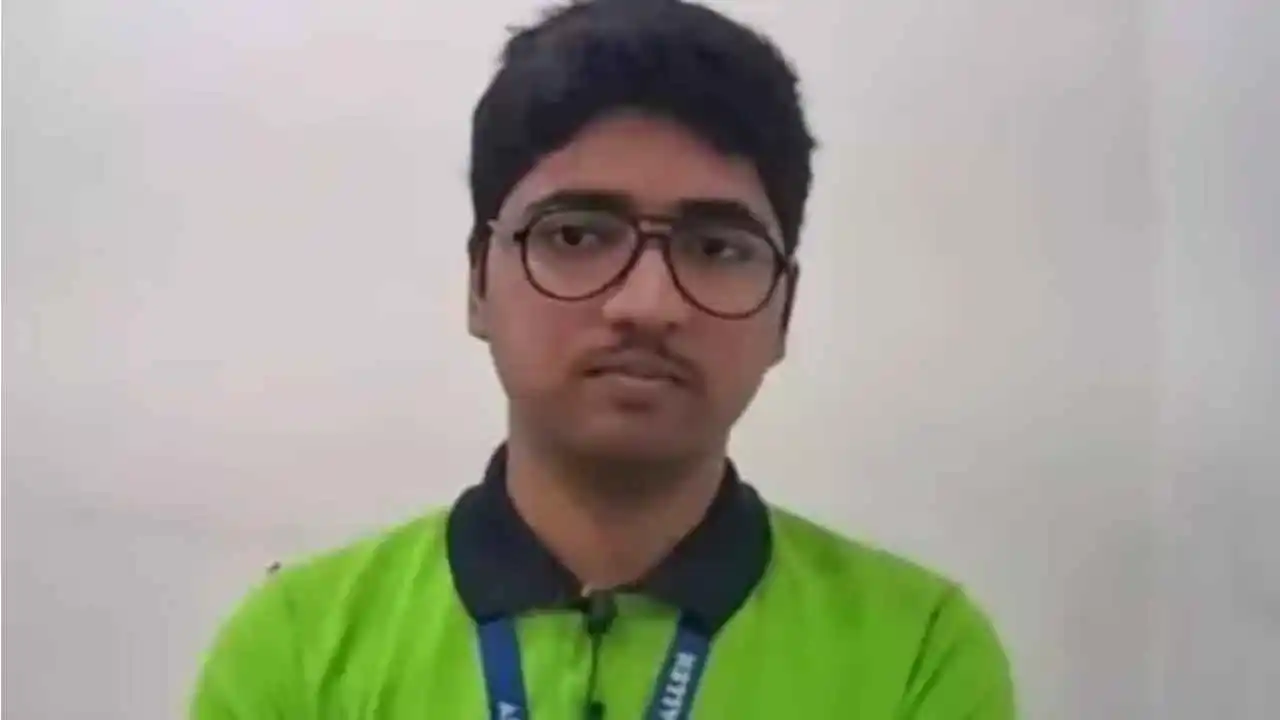
Nilkrishna Gajare, who hails from Maharashtra’s Washim, achieved an extraordinary feat by securing a perfect score of 100 in the JEE Main 2024 examination. His journey from humble beginnings to the pinnacle of success is a source of inspiration for many people.
Nilkrishna Gajare’s father is a farmer and had to discontinue his own education after Class 12 as he faced financial difficulties. Gajare faced financial challenges growing up. However, his unwavering dedication and strategic approach to preparation set him apart from the crowd, which resulted in his remarkable achievement of emerging as topper of one of India’s toughest Engineering entrance exams.
Nilkrishna Gajare had a strategic plan that helped him succeed in IIT-JEE 2024. According to Nilkrishna persistence is important and one should never stop trying until they understand a topic. He said being curious and asking questions are important traits of a good student. He said one should not be ashamed of asking questions.
Nilkrishna spent around 10-15 hours every day studying on his own for the JEE Main exam. He mentioned that he used his class notes for Physics and Physical Chemistry. For organic chemistry and inorganic chemistry, he relied on both notes and practice questions.
As for Mathematics, he believed that practicing regularly was the most important thing for him. Other interests of Nilkrishna include archery. He has participated at both state and national levels, and he finds joy in the sport. He said archery helps him understand the importance of focusing his attention on his goals. Nilkrishna likes watching movies and said they are a great source of enjoyment and relaxation.
He likes to watch a movie after exams and occasionally treats himself to one each week too. Gajare aims to keep up the pace for the JEE-Advanced exam and hopes to get into the IITs. He said he wants to secure admission in IIT-Bombay in the computer science branch.
2024 Lok Sabha Elections
Lok Sabha elections: Samajwadi Party chief Akhilesh Yadav files nomination from Kannauj
The Samajwadi Party has announced Akhilesh Yadav as its official candidate for the Kannauj Lok Sabha seat today

Samajwadi Party (SP) chief Akhilesh Yadav, submitted his nomination for the Kannauj Lok Sabha constituency ahead of tomorrow’s second round of voting. In front of Ram Gopal Yadav and other party leaders, the chief of the SP, who had previously contested the seat in 2000, 2004 and 2009, submitted the nomination.
Speaking with media, Ram Gopal Yadav said that SP would win the seat by a huge margin. The BJP candidate might lose his deposit in the seat, he said.
The Samajwadi Party has completely reversed its earlier plan to field former Mainpuri MP Tej Pratap Singh Yadav as their candidate, which is a significant political development.
Earlier, Akhilesh Yadav told reporters, people will find out when the nomination takes place, in reference to the speculations that he will contest for the seat. The historic victory of Kannauj is the subject of inquiry.
The former chief minister continued, the people have decided that the India bloc is coming as the future and the BJP will be history in this election.
Notably, elections for the Kannauj seat are scheduled for May 13, which would intensify the political drama that is now playing out in Uttar Pradesh. Previously regarded as the Samajwadi Party’s stronghold, the seat was lost by the party in the 2019 election when Subrat Pathak of the BJP won with a resounding victory.
The candidates competing for the following Uttar Pradesh seats will find out their destiny in the second round of voting, which is scheduled for tomorrow, Amroha, Meerut, Mathura, Baghpat, Aligarh, Ghaziabad, Gautam Buddh Nagar, and Bulandshahar.
Notably, two Bollywood celebrities running as BJP candidates in the second round are Hema Malini from Mathura and Arun Govil from Meerut. There are 91 contestants from UP competing in the second phase.
The seats in Gautam Buddha Nagar and Mathura are up for grabs, with a maximum of 15 applicants per seat. In Bulandshahr, six candidates are vying for the presidency. There are twelve contenders running in Amroha, eight in Meerut, seven in Baghpat, and fourteen in Ghaziabad and Aligarh.
1,67,77,198 votes will decide these candidates’ fates.
2024 Lok Sabha Elections
Bihar: Election Commission extends voting timings for 4 Lok Sabha seats due to heatwave
The voting period has been extended by two hours for a total of 299 polling stations
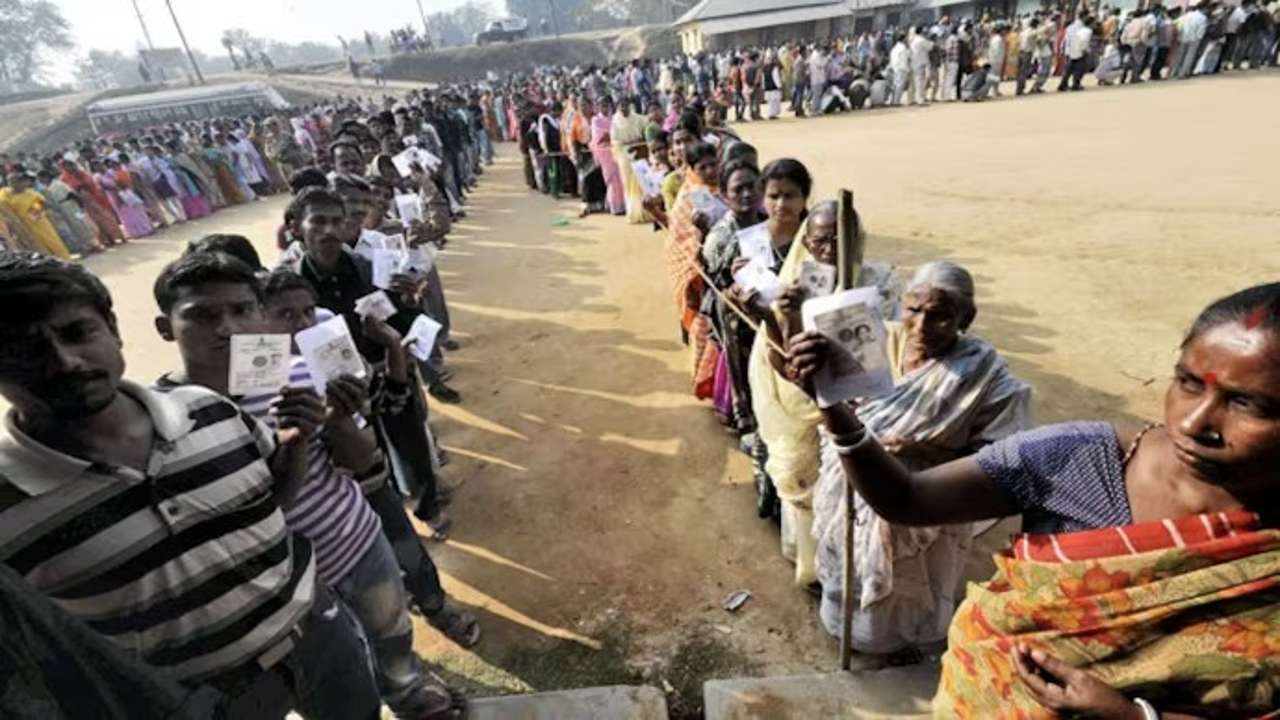
In accordance to the rising temperatures in Bihar, the Election Commission of India (ECI) has extended the voting hours for the upcoming three phases of the parliamentary polls at 1,700 polling places spread across four parliamentary seats, Banka, Madhepura, Khagaria, and Munger. The extension of the voting hours was announced by poll officials on Wednesday.
Polling generally takes place from 7 a.m. to 6 p.m. in most parts of the country, however, in certain isolated locations and in constituencies impacted by left-wing extremism, polls close two hours early to allow polling parties to move around easily.
The ECI gazette notification said the dates for the parliamentary constituencies of Banka (Katoria and Belhar assembly segments), which will hold elections on April 26, Madhepura (Mahishi assembly segment), Khagaria (Simri Bakhtiyarpur, Alauli, and Beldaur assembly segments), where voting will take place on May 7, and Munger (Suryagarha assembly segment), which will hold final phase elections on May 13, have been extended.
The voting period has been extended by two hours for a total of 299 polling stations in Simri Bakhtiarpur, 191 polling stations in Belhar AC of Banka, 172 polling stations in Katoria Assembly Constituency (AC) and 191 polling stations in Belhar AC of Banka, 207 booths in Mahishi AC of Madhepura seat, and 230 polling stations in Suryagarha AC of Munger.
In an effort to boost voter turnout, which fell to 49.26% in the first phase of polling on April 19 in Aurangabad, Gaya, Nawada, and Jamui from 53.47% in 2019 by 4.21%, the timing has also been extended.
Meanwhile, during the course of the next several days, temperatures in the southern states, namely Kerala and Karnataka, are predicted to rise by 2-3°C. In Southern Karnataka, where up to 14 constituencies are scheduled to vote in Phase 2, a heatwave warning has been issued. It is predicted to affect the districts of Tumkur, Davangere, Vijayapura, Yadgir, Koppal, Bagalkote, Kalaburgi, Raichur, Ballari, Chitradurga, Kolar, Chikkaballapura, Gadag, and Davangere.
The EC stated that a likely factor influencing voter turnout is the increase in temperature.
-
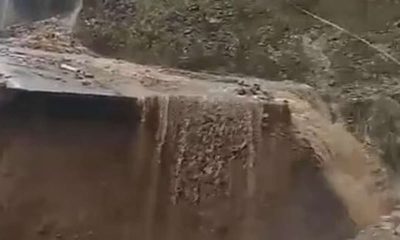
 India News4 hours ago
India News4 hours agoLandslide hits Arunachal Pradesh, highway linking Indo-China border affected
-
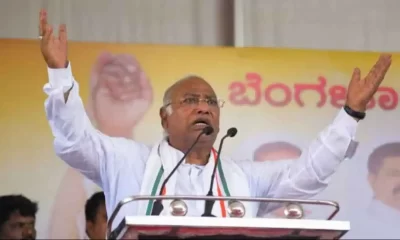
 2024 Lok Sabha Elections20 hours ago
2024 Lok Sabha Elections20 hours agoMallikarjun Kharge vows to continue politics till his last breath to defeat BJP
-
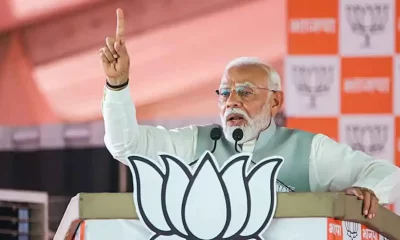
 2024 Lok Sabha Elections24 hours ago
2024 Lok Sabha Elections24 hours agoPM Narendra Modi slams Congress over Sam Pitroda’s inheritance tax remarks, accuses Congress of intending to impose higher taxes
-

 Entertainment22 hours ago
Entertainment22 hours agoMadhuri Dixit, Karisma Kapoor recreate Dil To Pagal Hai dance battle on Dance Deewane
-

 2024 Lok Sabha Elections21 hours ago
2024 Lok Sabha Elections21 hours agoNitin Gadkari says he’s better now after collapsing at election rally in Maharashtra’s Yavatmal
-

 Education2 hours ago
Education2 hours agoFarmer’s son Nilkrishna Gajare Nirmalkumar from Maharashtra scores 100 NTA score in IIT-JEE Mains 2024
-

 Entertainment3 hours ago
Entertainment3 hours agoBollywood stars Salman Khan, Alia Bhatt, Rekha, Sonakshi Sinha, Aditi Rao Hydari attend Sanjay Leela Bhansali’s Heeramandi premiere
-

 India News4 hours ago
India News4 hours agoTamannaah Bhatia summoned in illegal IPL streaming app case, to appear before cyber cell on April 29



